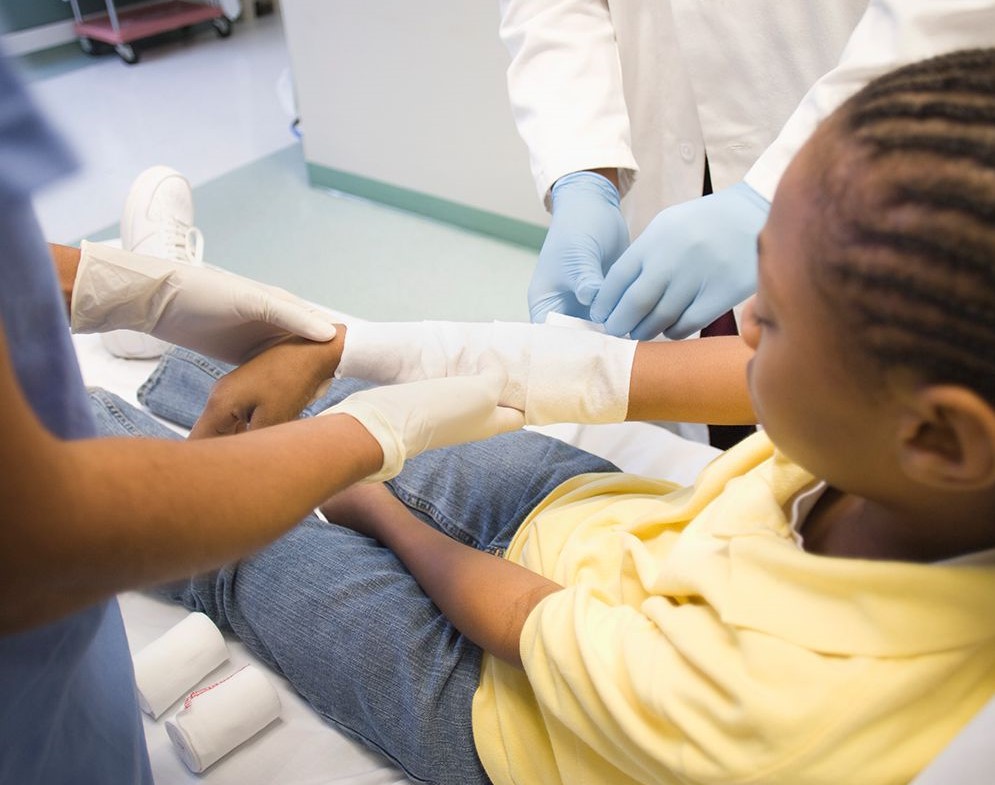
Understanding Bone Fractures: Diagnosis and Treatment
How Do I Know If I Have a Bone Fracture? Doctors can usually recognize most fractures by examining the injury and taking X-rays
Sometimes an X-ray will not show a fracture.
This is especially common with some wrist fractures, hip fractures (especially in older people), and stress fractures
In these situations, your doctor may perform other tests, such as a computed tomography (CT) scan, magnetic resonance imaging (MRI), or a bone scan.
In some cases, such as a possible wrist fracture with an initially normal X-ray, your doctor may apply a splint to immobilize the area and order a second X-ray 10 to 14 days later when healing can make the fracture visible.
Occasionally, even after the fracture diagnosis has been made, you may need other tests (such as a CT scan, MRI, or angiogram, a special X-ray of blood vessels) to determine whether other tissues around the bone have been damaged.
If your doctor suspects a skull fracture, they will probably skip X-rays and proceed directly to a CT scan, which will diagnose the fracture and any more important related injuries or secondary injuries inside the skull, such as bleeding around the brain.
What Are the Treatments for Bone Fractures?
A fracture often requires emergency treatment at a hospital.
An example of a minor fracture that may not require emergency care is a fracture of the tip of a toe.
If you think that bones may be broken in the back, neck, or hip, or if bone is exposed, do not move the person; instead, call emergency number for help.
In other cases, you may call for assistance or transport the person to the emergency room.
Before transporting the person, protect the injured area to avoid further damage.
For broken arm or leg bones, put a splint (made of wood, plastic, metal, or another rigid material padded with gauze) against the area to prevent movement; loosely wrap the splint to the area using gauze.
If there is bleeding, apply pressure to stop bleeding before splinting, then elevate the fracture.
Fractured bones must be set in their proper place and held there in order to heal properly.
Setting a bone is called reduction.
Repositioning bone without surgery is called closed reduction.
Most fractures in children are treated with closed reduction
Serious fractures may require open reduction — repositioning using surgery.
In some cases, pins, plates, screws, rods, or glue are used to hold the fracture in place.
Open fractures must also be cleaned thoroughly to avoid infection.
After setting, most fractures are immobilized with a cast, splint, or, occasionally, traction to reduce pain and help healing.
In most cases, medication is limited to painkillers to reduce pain.
In open fractures, antibiotics are given to prevent infection
Rehabilitation begins as soon as possible, even if the bone is in a cast.
This promotes blood flow, healing, maintenance of muscle tone, and helps prevent blood clots and stiffness.
After the cast or splint is removed, the area around the fracture usually is stiff for several weeks with swelling and bumps.
In children, increased hair on the arms and legs due to irritation of the hair follicles from the cast can occur.
With fractured legs, there may be a limp. Symptoms generally disappear within a few weeks.
If you have broken a bone, once the cast or splint is removed you should gradually begin using the area again.
It may take another 4 to 6 weeks for the bone to regain past strength.
Ask your doctor what activity type and intensity is safe for you, based on your fracture and overall health.
Exercising in a swimming pool is generally a good way to rehabilitate bones.
How Can I Prevent Bone Fractures?
To help prevent fractures, follow general safety precautions, including:
- Always wear a seat belt when riding in a motor vehicle.
- Always wear the proper safety equipment (helmets and other protective pads) for recreational activities, such as bike riding, snowboarding, or contact sports.
- Keep walkways and stairs free of objects that could cause you to trip.
- If you have osteoporosis, get regular exercise to improve your strength and balance, which may help reduce falls.
- Discuss starting bone-building medications and supplements (like calcium and vitamin D) with your doctor.
When you’re on a ladder, avoid using the top step, and be sure you have someone holding the ladder.
Read Also:
Emergency Live Even More…Live: Download The New Free App Of Your Newspaper For IOS And Android
Bone Cysts In Children, The First Sign May Be A ‘Pathological’ Fracture
Fracture Of The Wrist: How To Recognise And Treat It
Fractures Of The Growth Plate Or Epiphyseal Detachments: What They Are And How To Treat Them
Stress Fractures: Risk Factors And Symptoms
Calcaneal Fractures: What They Are, How To Intervene
Greenstick Fractures: What They Are, What The Symptoms Are And How To Treat Them
Broken Bone First Aid: How To Recognise A Fracture And What To Do
Fractures Of The Upper Limb: What It Looks Like And How To Deal With A Broken Arm


